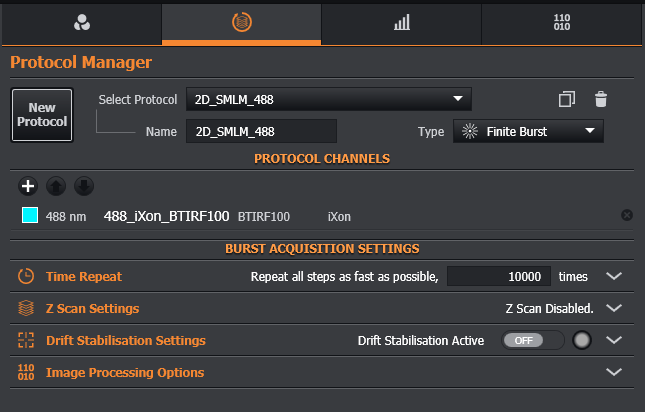Creating 2D SMLM Protocol
Acquiring Super Resolution images can be complex. If the sample is hard to focus on, start by focusing the sample in Widefield imaging modality, using the appropriate WF channel for the sample.
SMLM data can be acquired in any imaging modality: widefield, confocal or B-TIRF. The user should select the imaging modality depending on experimental requirements and goals. Widefield will deliver more background than the other imaging modalities. Confocal will acquire super-resolution data in thicker sections. B-TIRF will deliver more S/B (Signal to Background) and as such will deliver a better localization precision on the final result.
Select the appropriate channel and imaging mode for the experiment.
Select Finite Burst protocol
In this protocol add the desired imaging channel
A good starting point would be a burst of 10 000 frames.
Adjust laser and exposure time to have a good S/B.
Acquire protocol.

The user should keep in mind that as in any experiment the protocol imaging conditions need to be optimized case by case.
After the acquisition of the data proceed to the analysis software to retrieve the final super-resolution image.
The movie below shows an example of setting up a protocol for an SMLM acquisition of a DNA paint sample, using the B-TIRF imaging modality.